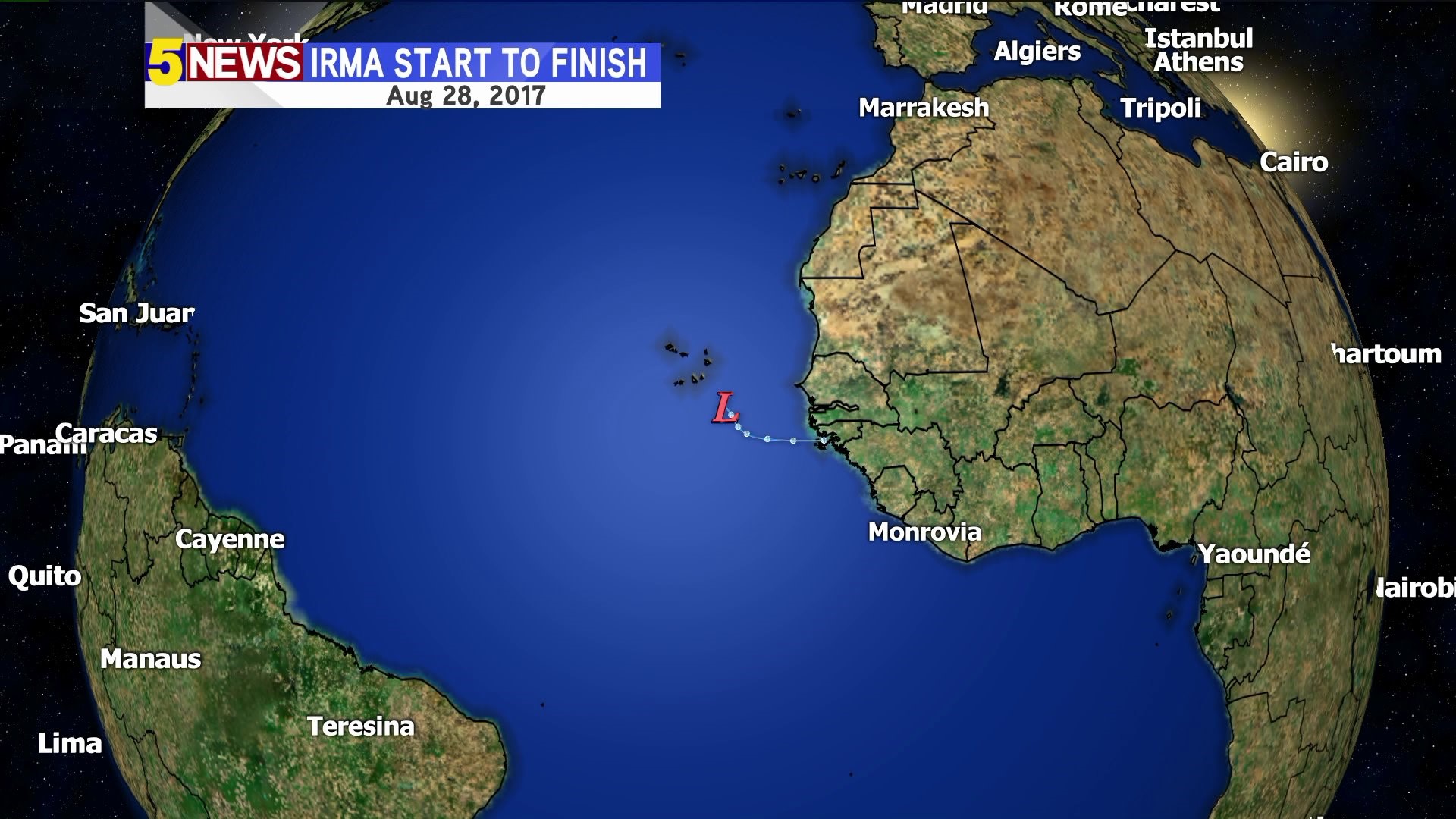The National Hurricane Center started issuing advisories on Hurricane Irma on August 30th; the wave first appeared off Africa August 27th.
Phillip Klotzbach Ph.D. a Hurricane Specialist/Research Scientist compiled a list of all the Meteorological Records/Notable Facts from Irma. Twitter: @phillipklotzbach
***Intensity/Day Measures***
- 185 mph lifetime max winds – tied with Florida Keys (1935), Gilbert (1988) and
Wilma (2005) for second strongest max winds of all time in Atlantic hurricane.
Allen had max winds of 190 mph in 1980 - 185 mph lifetime max winds – the strongest storm to exist in the Atlantic Ocean outside of the Caribbean and Gulf of Mexico on record
- 185 mph max winds for 37 hours – the longest any cyclone around the globe has maintained that intensity on record. The previous record was Haiyan in the NW Pacific at 24 hours
- 914 mb lifetime minimum central pressure – lowest in the Atlantic since Dean (2007) and 10th lowest in satellite era (since 1966)
- 914 mb lifetime minimum central pressure – lowest pressure by an Atlantic hurricane outside of the western Caribbean and Gulf of Mexico on record
- First Category 5 hurricane in the Atlantic since Matthew (2016) and first Category 5 hurricane in the tropical Atlantic (7.5-20°N, 60-20°W) since Hugo (1989)
- 3.25 day lifetime as a Category 5 hurricane – tied with Cuba (1932) for longest lifetime as Category 5 in Atlantic
- 3 consecutive days as a Category 5 hurricane – the longest for an Atlantic hurricane in the satellite era (since 1966)
- 12.75 named storm days – the most since Nicole (2016) and tied for 23rd most in satellite era for the Atlantic
- 11.25 hurricane days – the most since Ivan (2004) and tied for 9th most in satellite era (since 1966) for the Atlantic – satellite-era record is Ginger (1971) with a whopping 19.5 hurricane days
- 8.50 major hurricane days – the 2nd most in satellite era (since 1966) for the Atlantic – trailing Ivan (2004)
- 3.75 major hurricane days in the tropical Atlantic (7.5-20°N, 60-20°W) – trailing only Luis (1995) for major hurricane days in the tropical Atlantic
***Hurricanes are measured with something called Accumulated Cyclone Energy, it's referred to as ACE.
Here are Hurricane Irma's ACE Measures***
- Generated the most Accumulated Cyclone Energy by a tropical cyclone on record in the tropical Atlantic (7.5-20°N, 60-20°W)
- Generated more Accumulated Cyclone Energy than the first eight named storms of the Atlantic hurricane season (Arlene-Harvey) combined
- Generated the most Atlantic Accumulated Cyclone Energy in a 24-hour period on record, breaking old record set by Allen (1980)
- 67.5 Accumulated Cyclone Energy – the 2nd most by an Atlantic hurricane in satellite era (since 1966) – trailing only Ivan (70.4)
- Generated enough Accumulated Cyclone Energy to satisfy NOAA ACE definition for an average Atlantic hurricane season
- Generated more Accumulated Cyclone Energy than 18 entire Atlantic hurricane seasons in the satellite era (since 1966) Landfall Records
- Leeward Islands: Strongest storm on record to impact the Leeward Islands defined as 15-19°N, 65-60°W for this calculation, with max winds of 185 mph. Okeechobee Hurricane (1928) and David (1979) were previous strongest at 160 mph
- Turks and Caicos: Closest approach of a Category 5 hurricane on record
- The Bahamas: First Category 5 hurricane to make landfall since Andrew (1992)
- Cuba: 160 mph, 924 mb – Category 5
- First Category 5 hurricane to make landfall since the Cuba Hurricane of 1924
- Continental United States: 1st Landfall (Cudjoe Key, FL): 130 mph, 929 mb – Category 4

